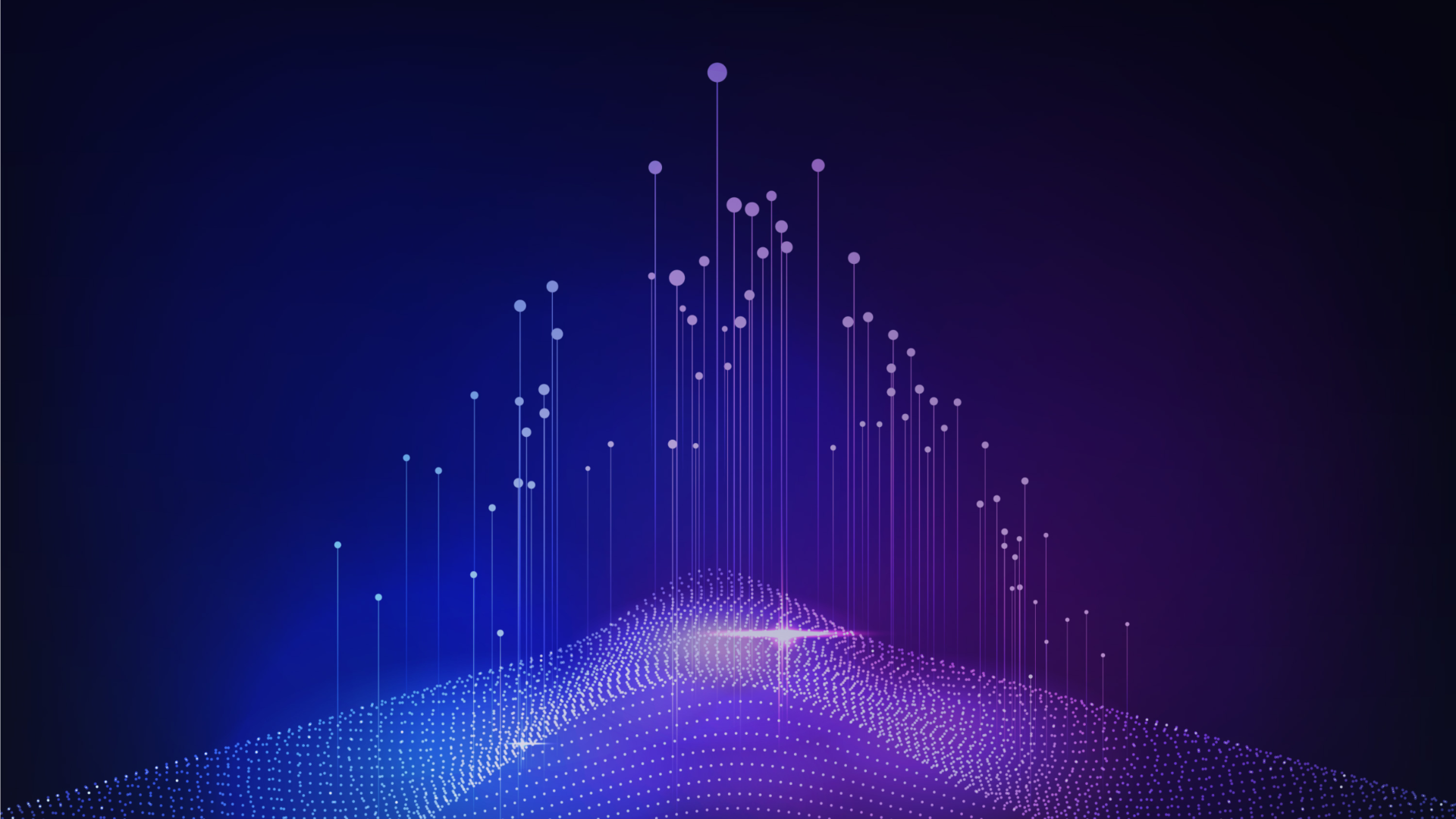
January 08, 2021
Big Data In Retail: The Real-life Examples
Author:

CSO & Co-Founder
Reading time:
10 minutes
Today, big data plays a crucial role in a broadly understood retail sector. Almost every large company selling products utilize this technology to achieve improved customer service, personalized customer experiences, and more efficient price optimization. In this article, we are going to take a look at all the benefits of retail big data. Also, we will analyze some of the fascinating real-life examples of retail big data in action. Let us jump right to it!
If you run a retail company, you surely understand the significance of variables in this industry. In many instances, even a slight change can affect your entire business, both in a good and bad way. That’s why modern retail companies use technologies like big data, machine learning, and data analytics in order to improve their offer, prices, and customer service. In modern times, that’s the quickest and most reliable way to get ahead. This raises the question, how can you utilize retail big data? And what benefits will it bring?
The significance of retail big data
First of all, retail big data aids retailers in understanding their customers on a much deeper level. How is that possible? Primarily, thanks to many metrics and measurements that can be obtained by analyzing:
- Social media preferences and activity
- Internet browsing and Google searches history
- Geographical and demographic data
- Historical purchasing history, and several other aspects
Notably, retail big data is not just for online retailers. In fact, traditional brick-and-mortar stores use it every day, as you’ll see further in the text. For example, do you remember our Amazon Go stores example from one of the previous blog posts? Go stores are typically brick-and-mortar concept. Yet, they are monitored continuously for customer activity and behavior.
This way, Amazon gets priceless knowledge that allows them to tailor their merchandising, deals, and marketing campaigns to meet their shoppers’ needs. Retail big data can also be used to measure ROI, foot traffic, sales per square foot, and other typically retail metrics.
You have to face it: In today’s business scenery, retail big data has a critical value. It can tip the balance of your success.

Retail big data helps grow revenue: Starbucks case
As Forbes reports, Starbuck’s total revenues grew from 21.3 billion USD in FY 2016 to 24.7 billion USD in FY 2018. This represents an increase of approximately 10.3%[1]. It’s no secret that this company was actively using big data over this period. They used (and still do!) retail big data to personalize their offer, develop new communication channels, and offer new products.
All the benefits of retail big data
There are several aspects of why retail big data is such a massive trend in today’s retail industry. Let’s take a closer look at them:
More thotough view of the customer
For starters, retail big data allows you to understand your customers in a much more insightful way. Just take a look at Facebook–they know everything about us. What we like, what we don’t like, where we work, what school we finished, what are our interests, where we were during last summer vacation, etc.
Retail companies try to do the same thing. They want to get to know their customers. This knowledge helps them tweak their offer and grow sales. The more they know about you, the better chance that you will eventually buy something.

In fact, almost every modern marketing campaign is based exclusively on big data and data analytics.
Let’s consider the fashion industry example. This sector, like no other, eagerly cooperates with celebrities and influencers. That’s because they know their target audiences and know what to do in order to encourage them to buy. Almost every large fashion brand has at least one globally renowned ambassador. Simply because this strategy is extremely effective.
Price optimization
It’s one of the most attractive benefits of retail big data. Pricing can cause a severe headache. If your prices are too low–you don’t make enough money. If they are too high–you lose customers. That’s why retail companies use various tools that are based on retail big data and help them assess the perfect price level. In fact, understanding what customers expect can inform the retailer of ways they can stand out from their competition and win the market.

Supply chain optimization
There can be no retail without supply chain management. The journey of the products you offer in your store starts at the manufacturer’s factory or production plant. There are several stops along the way before the product reaches your store. The products are sent to wholesalers and distributors first. Sometimes they travel through several countries.
That’s why companies try to optimize supply chains. To shorten and facilitate the entire process. Retail big data can also help here. This technology can be used to optimize routes, rethink distribution strategies, and monitor your inventory.
Also, Warehouse Management Systems that are used to monitor, audit, and manage your inventory are based on big data, so it’s all interconnected.

Improved customer service
This subject is vast. In short, retail big data enables companies to enhance their customer service and offer improved customer experience. For instance, there are many online brand monitoring tools that help you find out what your customers really think about you. It’s called “sentiment analysis”.
In fact, each opinion or comment posted on your fan page (or any other place on the Internet, for that matter) can be assigned to one of three groups: Positive, negative, neutral. Organizations use this sentiment analysis to determine if the opinions about their brands are positive and, if not, what needs to be improved.
Another vital aspect of retail big data in customer service is based on customers’ behavior. In every large store, there are tens of cameras that track your movement and monitor your activity. Store owners use this technology to find out what do you do in the store and if you managed to find what you were looking for.

Prediction demands
Demand prediction is another essential element of retail big data. Retail companies try to predict the future all the time. After all, creating a new trend can be a lucrative endeavor! But there’s also the other side of the coin–it’s a risky endeavor. If your novelty turns out to be a failure, you face the risk of losing hundreds of thousands of dollars.
And this is where big data steps into play. Through retail big data and data analytics, retailers can generate insights on customer habits and behaviors. This way, they can find out which products are currently in-demand and which ones should be withdrawn from sale. This knowledge can be used to predict future in-demand products and shape the market of tomorrow. It does sound tempting, doesn’t it?
As you can see, retail big data is really a true game-changer. This technology helps you sell more and satisfy your customers. It’s already a global standard, and if you want to compete on the market, you simply have to adopt retail big data. That’s the theory. What does it look like in real life? We bet your favorite retail chain uses big data. Let’s take a look at some examples.

Retail big data: The real-life examples
Costco
If you live in North America, you surely know this company. Costco is a membership-based warehouse retailer. In 2017, Costco found out that some of the batches of their peaches, nectarines, plums, and pluots were contaminated with listeria.
Thanks to big data, it took them just one day to use the data Costco collects about their members to create a list of all the customers who could have purchased the potentially contaminated products. It’s a fascinating example of how big data improved customer experience but also… protected health!
You may also find it interesting – Compliance analysis at Retail
IKEA
This global furniture leader knows their way around CX. IKEA uses qualitative data in order to create an in-store experience that eliminates many inconveniences of furniture shopping. If you’ve ever visited IKEA, you know what this means[2]:
- A low-priced restaurant inside the store. After all, after hours of shopping, you can get hungry!
- A supervised play area for kids. That’s because many customers come to the store with their children.
- A fully-fledged recommendation engine on their website. IKEA’s online store suggests related or complementary products to the items, which you have viewed, highlighted as favorite, or purchased via the website.

Groupon
Let’s focus on the e-commerce sector for a while. Groupon is an online e-commerce platform that allows you to buy activities, holidays, and other goods and services at reduced prices. That’s possible thanks to the idea of group shopping.
If several customers buy the same option, it can be sold a bit cheaper. Of course, with Groupon, your range of selection is limited, but you have the possibility to go to Hawaii for half the standard price. As of the third quarter of 2020, the daily deal site Groupon had 34.2 million unique customers who had bought at least one of Groupon’s deals during the trailing 12 months[3]. Granted, COVID-19 severely damaged their sales, but still, this number is impressive.
To serve that range of customers, Groupon processes over one terabyte of raw data every day[4]. In their case, a big data platform is simply a necessity, as their datasets are too extensive to store and study without a big data tool.

Mall of America
It’s the largest shopping and entertainment complex in North America. They decided to improve CX by adopting an online chatbot. You can use this chatbot via the mall’s website, mobile app, Facebook fan page, and Amazon Alexa assistant. The reason why Mall of America decided to adopt a chatbot is twofold: They wanted to achieve better customer service and a more rewarding customer experience.
The chatbot answers customer queries using natural language and provides recommendations regarding food, attractions, events, and gifting[5].
Naturally, the list of companies using retail big data is much longer. If you are interested in using retail big data – drop us a line! We are always keen to show you all the benefits of this technology, and we will help you with every aspect of this endeavor. We know how to help you sell more. Let us prove that!
References
[1] Forbes.com. Starbucks Top Line To Grow By 10% in FY 2019. Sep 26,2019.URL: https://www.forbes.com/sites/greatspeculations/2019/09/26/starbucks-top-line-to-grow-by-10-in-fy-2019/?sh=79f51d42494f. Accessed Jan 8,2021.
[2] Chiara Tedone. IKEA: How Big Data Shapes the Customer Experience. May 5, 2016. URL: https://www.linkedin.com/pulse/ikea-how-big-data-shapes-customer-experience-chiara-tedone/. Accessed Jan 8,2021.
[3] Tugba Sabanoglu. Number of Groupon’s active customers from 2nd quarter 2009 to 3rd quarter 2020. Nov 30, 2020. URL: https://www.statista.com/statistics/273245/cumulative-active-customers-of-groupon/. Accessed Jan 8,2021.
[4] Talend.com. Big Data in Retail: Common Benefits and 7 Real-Life Examples. URL: https://www.talend.com/resources/big-data-retail/. Accessed Jan 8,2021.
[5] Judy Mottl. Mall of America embracing chatbot to boost retail customer experience. Apr 5, 2018. URL: https://www.retailcustomerexperience.com/articles/mall-of-america-embracing-chatbot-to-boost-retail-customer-experience/. Accessed Jan 8,2021.
Category:




